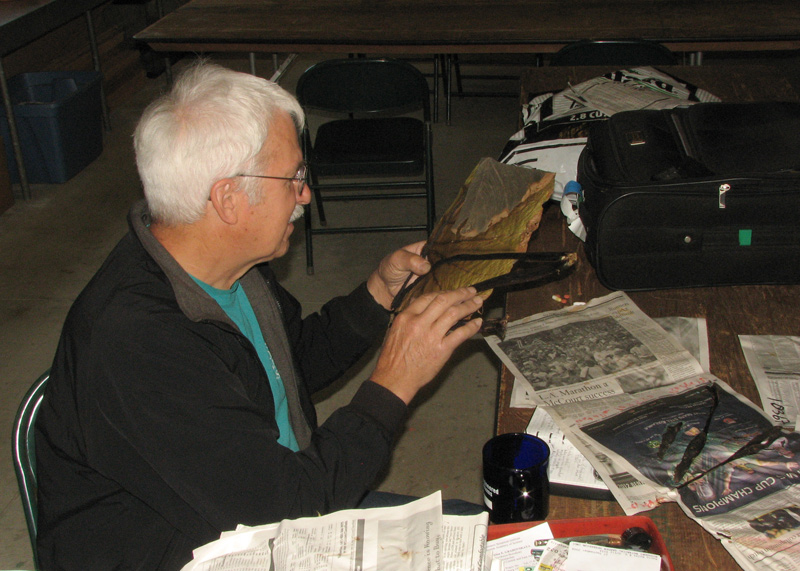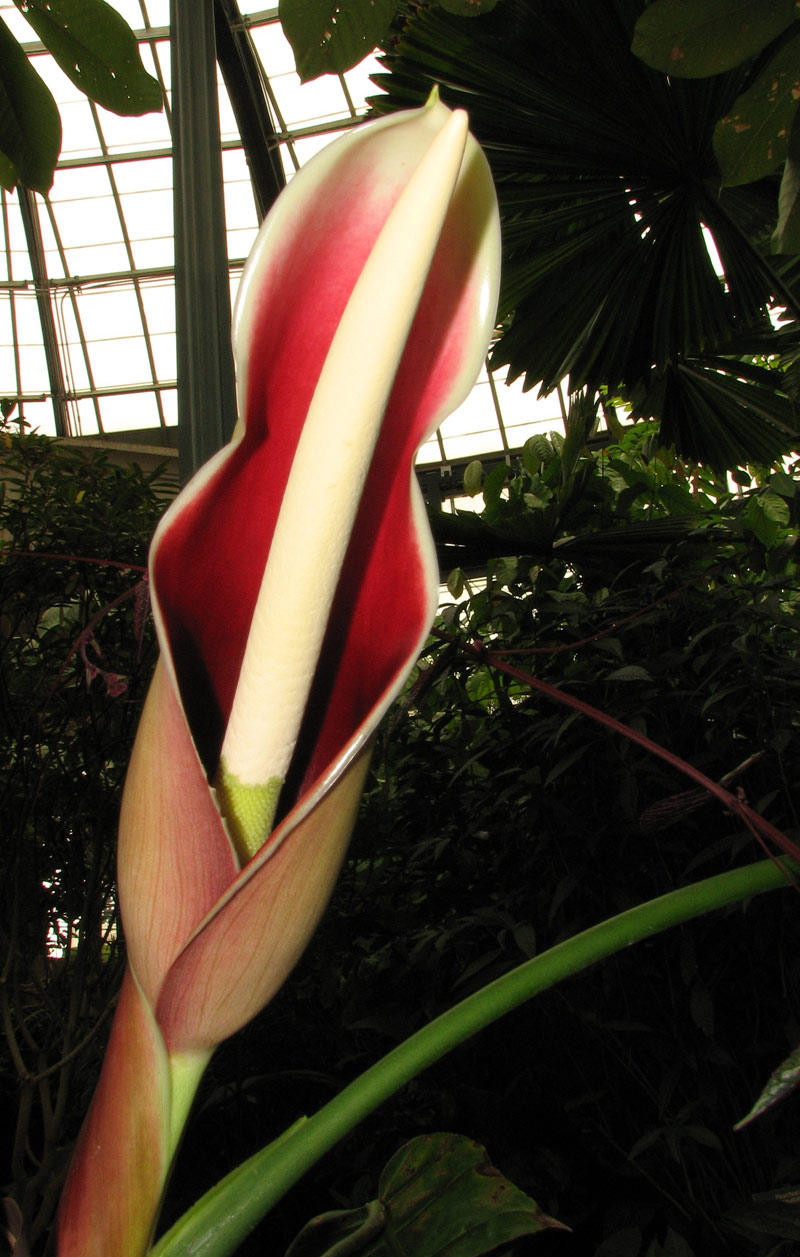
Dr. Thomas B. Croat examines an herbarium specimen of a new Ecuadorean Philodendron from The Huntington's tropical collections. This specimen will be an isotype, a permanent scientific reference for this species.
The Rose Hills Foundation Conservatory for Botanical Science and attendant greenhouse facilities are well-stocked with palms, orchids, carnivorous plants, and many other tropical plants. Members of the aroid family (Araceae) such as Anthurium, Philodendron, and Pothos are especially well-represented and accessible to Conservatory visitors. Their bold foliage and distinctive growth habits are on display every day of the year, and at least a few can be expected to be seen in flower at any given time. The several hundred living accessions of aroids are, after the orchids, the most extensive and significant plant family in the Huntington tropical collections. Some are imposing in flower or leaf, not least of which is the famous Corpse Flower, or Titan Arum (Amorphophallus titanum). Others, like Philodendron patriciae, are not only extraordinarily beautiful but have compelling botanical histories yet to be written.

Philodendron patriciae flowering in the Conservatory.
This May it was my great pleasure to coordinate The Huntington’s hosting of Dr. Thomas B. Croat, P. A. Schulze Curator of Botany at the Missouri Botanical Garden. Dr. Croat is legendary for his field explorations, plant collecting, and extensive publications, the latter focused mainly on New World members of the aroid family. Over some years I had attempted to persuade Dr. Croat to visit our living collections to see what he might find of interest to advance his research. Our aroid collections kept Dr. Croat busy for four days: pressing herbarium specimens (thereby helping to document our aroids), photographing plants, and writing descriptions for each plant.
Dr. Croat was careful to ask a crucial question about each accession: Where was the plant originally collected in the wild? Without such information the scientific value of the plants and the specimens, even in the case of new species, would be greatly diminished. This emphasis on the importance of documentation for living collections is not unlike the value of provenance for art objects such as a potter’s mark or signature so often stressed on the Antiques Roadshow. Dr. Croat estimated that our living collections contain upwards of 30 species of Anthurium and Philodendron that are new to science and others that are otherwise of value to the scientific understanding of these plants. This is an extraordinary level of botanical significance for a specialized collection of plants in any family, in any garden. In the coming years we will provide Dr. Croat with additional specimens and notes on color, fragrance, and other details only obtainable from living plants, features that serve to document new aroid species. Exchanges of living material between our respective gardens are also anticipated.

Philodendron patriciae in the Conservatory.
The scientific value of Huntington living plant collections is demonstrated by their role in ongoing floristic and taxonomic studies by various researchers. At the same time, building and refining these multipurpose collections gives visitors an opportunity to view and understand the world of plants. The many rare—and sometimes new—species in our collections can make this experience especially rewarding.
Dylan P. Hannon is curator of conservatory collections at The Huntington.
